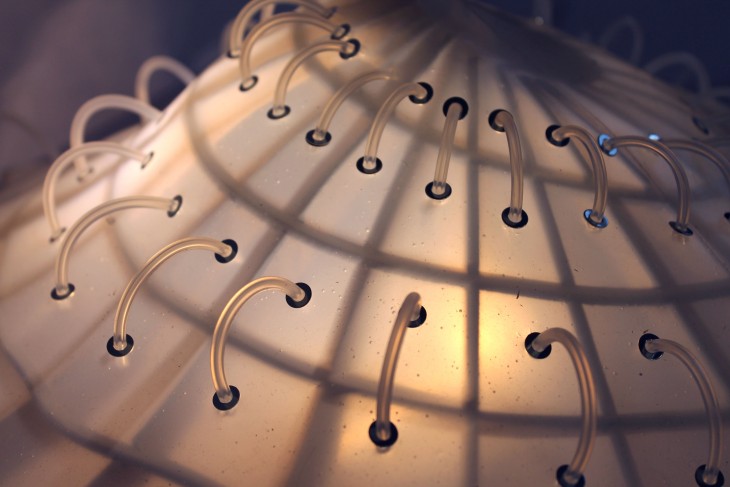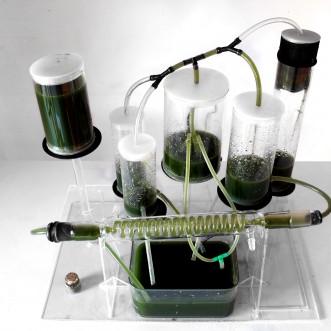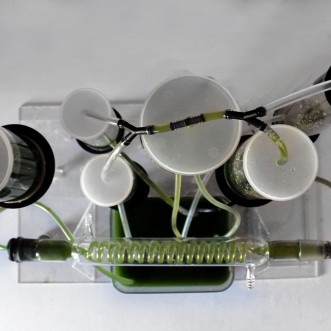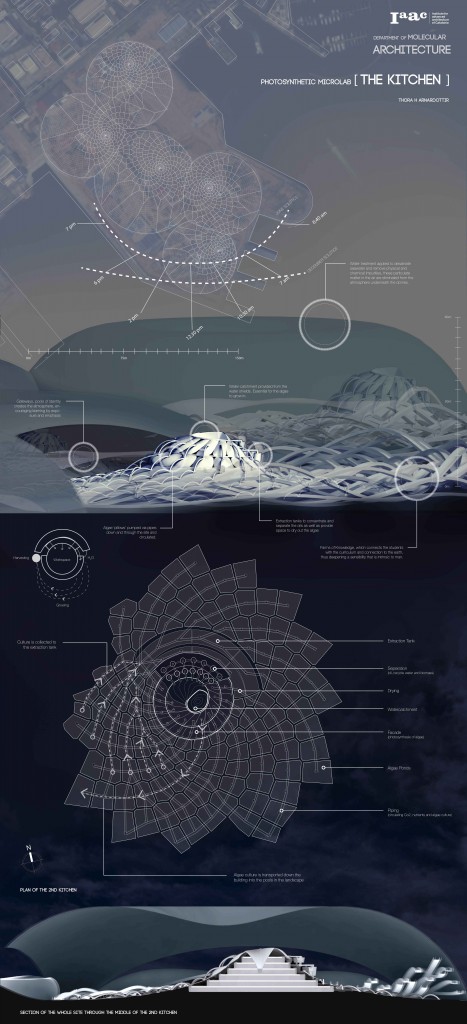
The Kitchen provides the campus in Shenzhen with an organically triggered economy, by means of algae. Focusing on bioplastics and alternative nutrients. Algae serves as an excellent raw material to supply or fuel the industrial process for plastic production. As it has many advantages such as a fast, high yield and the ability to grow in a range of inhospitable environments. Bioplastics provides the advantages of conserving fossil resources and reducing CO2 emissions, which make them an important innovation of sustainable developments and they can play a vital role as an environment friendly, biodegradable alternative compared to conventional plastics.
- The Kitchen – Concept model
Algae based biofuels are often quoted as the only plausible biofuel solution to the world’s oil crisis. But the economic viability of algae fuels is still in doubt. Exploring the production of nonfuel products such as bioplastics could play a major role in shaping the economics and viability of algal biofuel solutions.
Although microalgae is most known for its potential as a biofuel source it may also be one of the most nutritious foods known to man. Food has shaped human evolution, our culture and the environment around us but today’s food is now lower in essential nutrients than what it contained 50 years ago due to farming practices that have depleted our soils of minerals. Chemical fertilizers are destroying the microorganisms that are valuable to the soil’s minerals. At the same time our modern lifestyle demands an increased dietary requirements for nutrients as the stress from environmental pollutants have affected our basic need for survival. Most people believe it is better to get nutrients from natural foods but since many conventional foods are nutrient depleted, more people are taking supplements and eating so-called super-foods. These offer new opportunities for disease prevention as these nutrients can go way beyond isolated vitamins and mineral supplements.
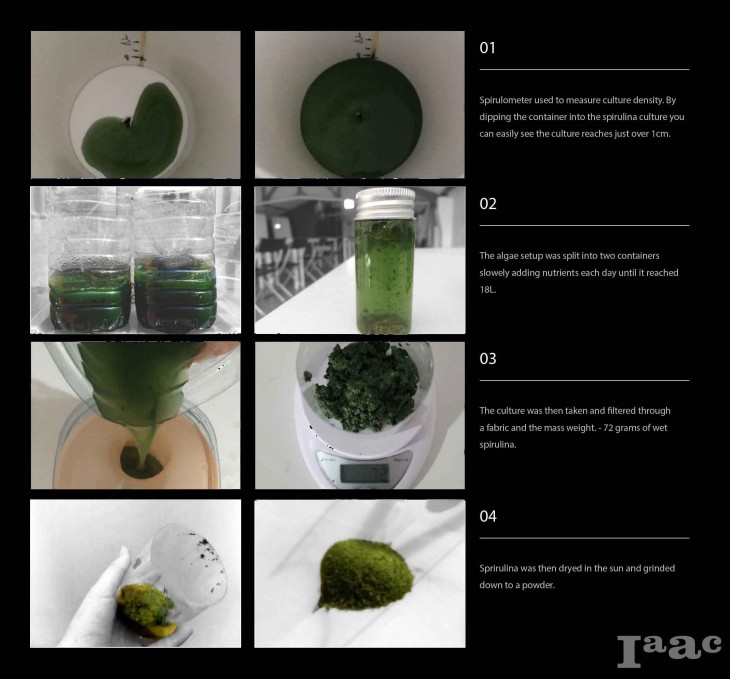
Algal properties were examined through a series of growing and harvesting experiments
- Model of the algae system as represented in the Algae Kitchens
</p>
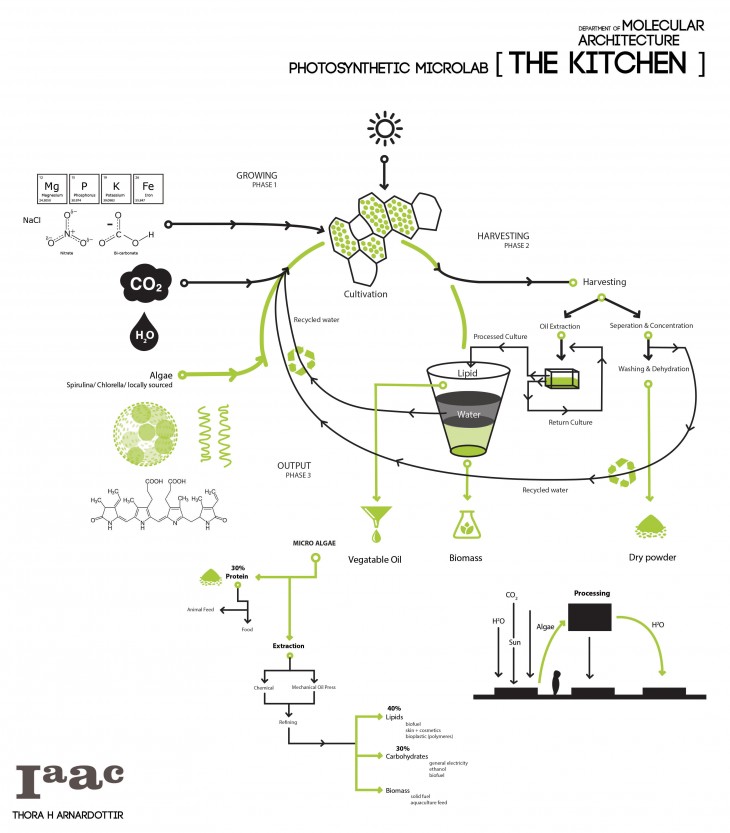
The design was developed as a functioning system, harnessing the machinery of the algal behavior to perform like nature does. By extracting and concentrating oil into plastics, converting energy, and producing oxygen in life-sustaining ways. The Kitchen utilizes the algae to run its operating system using the biofuel produced on site and take in the distilled water as well as filtered nutrients provided by the water domes on site. The structure distributes the algae from the top where it photosynthesises before reaching the ponds in the landscape. The algae has a growing circle it goes through on site before being harvested and refined through different methods of drying or oil extraction.
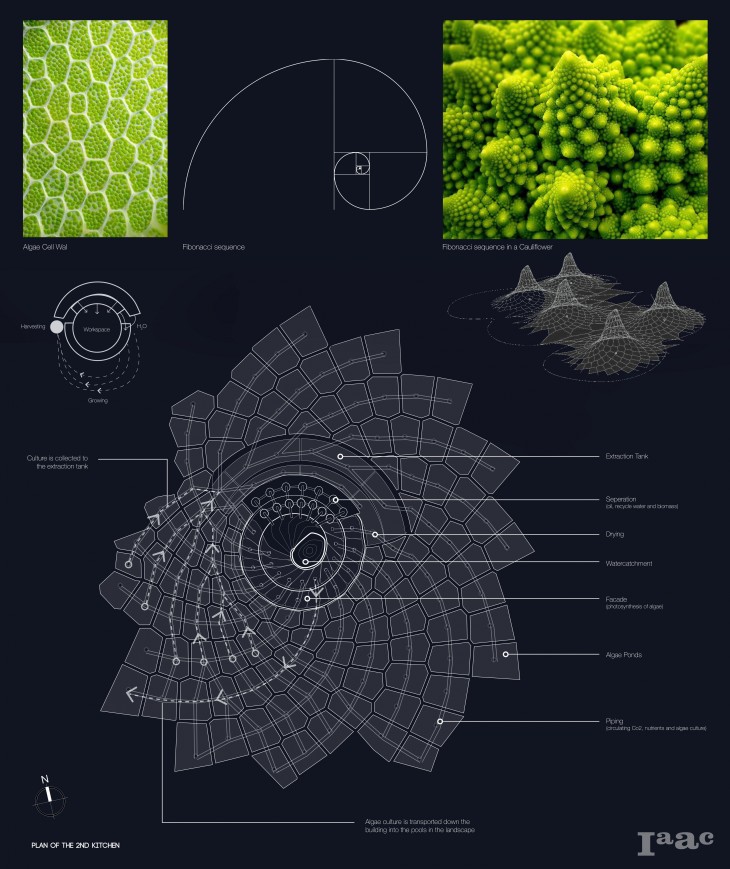
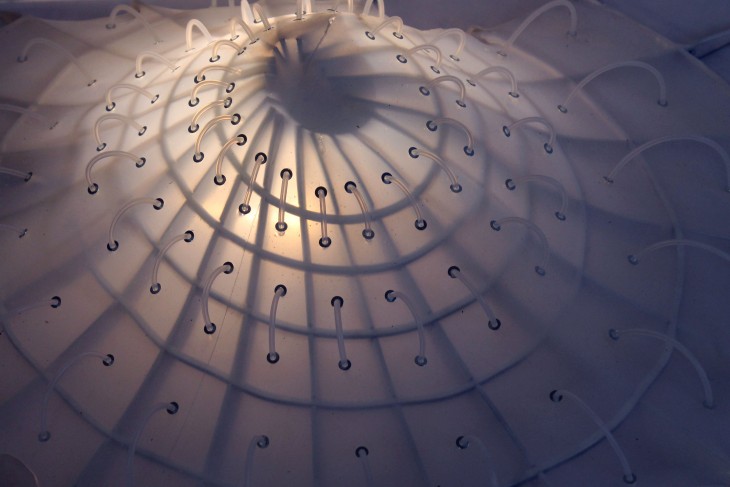
</p>
IAAC, Self Sufficient Buildings.
[Department of Molecular Architecture] Photosynthetic MicroLab – The Algae Kitchen is a project of IaaC, Institute for Advanced Architecture of Catalonia developed at Master in Advanced Architecture, MAA01 in 2016 by:
Student:
- Thora H Arnardottir
Faculty:
- Enric Ruiz-Geli
- Mireia Luzarraga Alvarez
